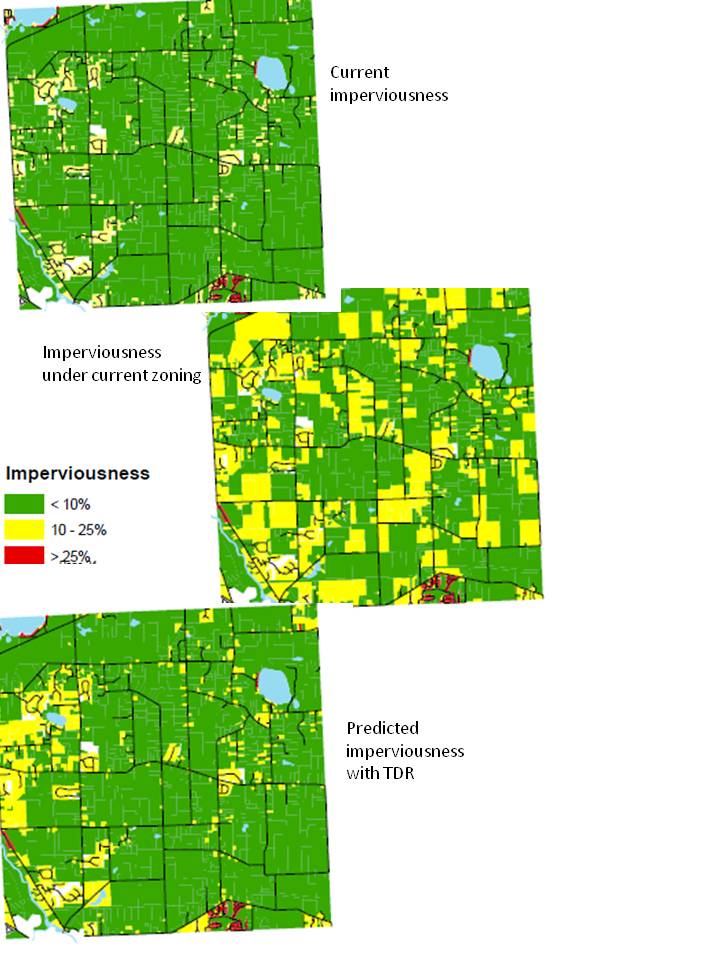A new build out report commissioned by Webster Township will help the township guide future development in a way that preserves its rural character and natural beauty.
The township commissioned Sarah Mills, a University of Michigan doctoral student at the School of Urban and Regional Planning, to perform the study, which shows the expected future level of residential and commercial development given existing allowable land uses in the township’s master plan and zoning ordinance. The study then describes several alternative “build out” scenarios given different changes to the township’s policies.
Under current policies, the township can expect to see a tripling of households, from 2,306 to 6,830. A build out study conducted by HRWC in 1992 showed similar results. Both studies measured resulting impervious surfaces, which is a leading indicator of water quality. Arms Creek, whose watershed is entirely within Webster Township, is currently a healthy creek with very little impervious surfaces covering the lands draining into it. Only about 5% of the creek’s watershed is covered by hard surfaces like roads, driveways, rooftops, or parking lots. The pattern of future development as predicted by current policies would cover up to 15% of the creek’s watershed with impervious surfaces.
However, under various alternative scenarios, using certain zoning tools designed to allow future development to occur, but in a more compact way, impervious surfaces can remain at a healthy level. The most effective of these tools included the use of transfer of development rights (TDR), where development at higher densities is transferred to areas where the community can accommodate increased development, and away from farming and natural areas where the community wishes to preserve rural character. HRWC conducted a study of TDR which also reached similar conclusions about its effectiveness at keeping impervious surface low and preserving water quality.
The township will examine all the alternatives described in the study, and they plan to use the study as a guide in developing policies that will maintain their community’s rural character as well as the health of Arms Creek.



